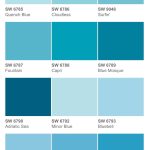Maximize Your House’s Aesthetic Appeal With Our Unbeatable House Paint Coverage – Click Now For Stunning Results!
House Paint Coverage: A Comprehensive Guide for Homeowners
Welcome, Home Lover! Are you planning to give your house a fresh coat of paint? One of the essential considerations in any painting project is understanding house paint coverage. Knowing how much area can be covered by a specific amount of paint can save you time, money, and effort. In this article, we will provide you with all the information you need to make informed decisions and achieve the best results for your home.
Introduction
1. What is House Paint Coverage?
1 Picture Gallery: Maximize Your House’s Aesthetic Appeal With Our Unbeatable House Paint Coverage – Click Now For Stunning Results!

House paint coverage refers to the surface area that can be coated with a specific quantity of paint. It is typically measured in square feet or square meters per gallon or liter of paint. Understanding the coverage rate of your chosen paint product is crucial for estimating the amount of paint you need for a project.

Image Source: chameleon-decorators.co.uk
2. Who Should Know About House Paint Coverage?
House paint coverage is essential knowledge for homeowners, professional painters, and anyone involved in a painting project. Whether you plan to paint the interior or exterior of your house or handle commercial painting jobs, understanding coverage rates will help you calculate the required amount of paint accurately.
3. When to Consider House Paint Coverage?
Consider house paint coverage during the planning stage of your painting project. It is important to estimate the amount of paint needed to avoid running out of paint in the middle of the job or purchasing excessive amounts that may go to waste. Considering coverage rates will also help you compare different paint products and choose the most cost-effective option.
4. Where can House Paint Coverage be applied?
House paint coverage is applicable to various surfaces, including walls, ceilings, trims, doors, and other exterior or interior elements. Whether you are painting wood, metal, concrete, or drywall, understanding coverage rates will ensure you have enough paint to achieve the desired finish.
5. Why is House Paint Coverage Important?
Knowing the coverage rate of your paint is essential for budgeting and planning purposes. It helps you estimate the cost of materials accurately and prevents unnecessary expenses. Additionally, understanding coverage rates allows you to achieve consistent and uniform coverage throughout your painting project.
6. How to Calculate House Paint Coverage?
To calculate house paint coverage, you need to know the total square footage of the area you plan to paint and the coverage rate provided by the paint manufacturer. Multiply the square footage by the coverage rate to determine the amount of paint required. It is advisable to add a bit extra to account for touch-ups and potential wastage.
The Advantages and Disadvantages of House Paint Coverage
1. Advantages of House Paint Coverage
✅ Cost-Effective: Understanding paint coverage helps you purchase the right amount of paint, preventing wastage and saving money in the long run.
✅ Efficient Planning: Knowing the coverage rate allows you to plan your painting project accurately, ensuring you have enough paint for the entire job.
✅ Consistent Finish: By estimating the required amount of paint, you can achieve consistent coverage and maintain a uniform appearance throughout your painted surfaces.
2. Disadvantages of House Paint Coverage
❌ Inaccurate Estimation: If you miscalculate the coverage rate or the size of your painting area, you may end up with insufficient paint or excess unused paint.
❌ Additional Costs: If you underestimate the amount of paint needed, you may have to purchase more paint, leading to unexpected expenses.
❌ Touch-Up Challenges: Insufficient coverage may require additional touch-ups to achieve the desired finish, prolonging the painting process.
Frequently Asked Questions (FAQ)
1. How do I determine the coverage rate of a specific paint product?
Each paint product provides information on its coverage rate on the label or technical data sheet. It is recommended to consult these resources or contact the manufacturer for accurate details.
2. Can the coverage rate vary for different paint colors?
Yes, the coverage rate may vary for different paint colors due to variations in pigment concentration. Generally, darker colors tend to have lower coverage rates compared to lighter colors.
3. What factors can affect the actual coverage achieved?
Various factors, such as surface porosity, texture, and application method, can affect the actual coverage achieved. It is advisable to conduct a test patch to determine the coverage on your specific surface.
4. Should I apply multiple coats to improve coverage?
In some cases, applying multiple coats can improve coverage and achieve a more even finish. However, it is essential to consider the drying time and manufacturer’s recommendations to ensure proper application.
5. What should I do with excess paint after completing the project?
If you have excess paint after completing your project, ensure proper storage by sealing the paint can tightly and storing it in a cool, dry place. Excess paint can be used for touch-ups or future projects.
Conclusion
In conclusion, understanding house paint coverage is crucial for any painting project. By considering the information provided, you can estimate the amount of paint required, make informed decisions, and achieve the best results. Remember to calculate coverage rates accurately, weigh the advantages and disadvantages, and consult reliable sources or professionals for specific paint product details. Happy painting!
Disclaimer: The information provided in this article is for general informational purposes only and should not be considered as professional advice. Always consult with a qualified painter or manufacturer for specific guidance on your painting project.
This post topic: Paint



